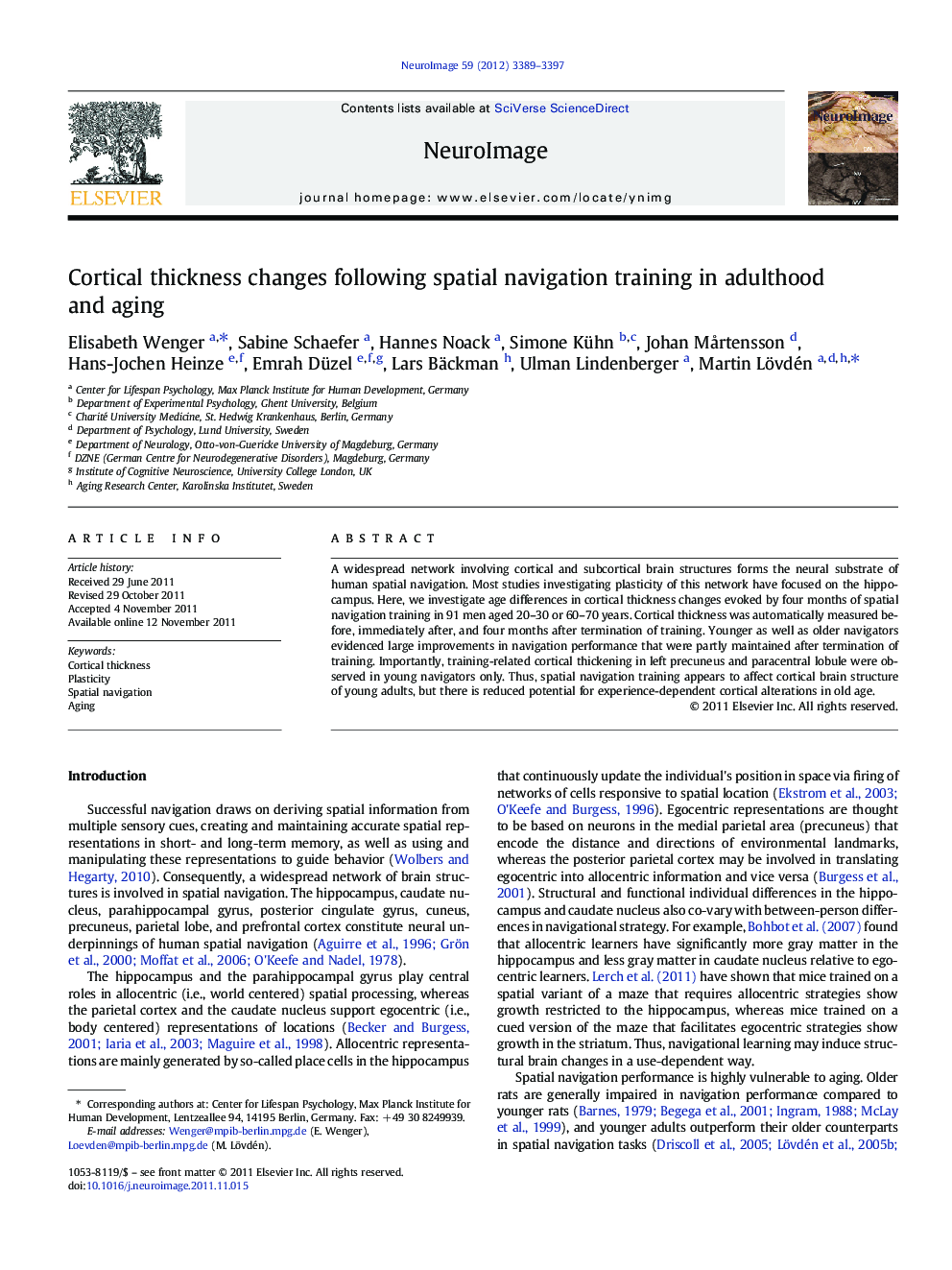| Article ID | Journal | Published Year | Pages | File Type |
|---|---|---|---|---|
| 6032691 | NeuroImage | 2012 | 9 Pages |
Abstract
A widespread network involving cortical and subcortical brain structures forms the neural substrate of human spatial navigation. Most studies investigating plasticity of this network have focused on the hippocampus. Here, we investigate age differences in cortical thickness changes evoked by four months of spatial navigation training in 91 men aged 20-30 or 60-70Â years. Cortical thickness was automatically measured before, immediately after, and four months after termination of training. Younger as well as older navigators evidenced large improvements in navigation performance that were partly maintained after termination of training. Importantly, training-related cortical thickening in left precuneus and paracentral lobule were observed in young navigators only. Thus, spatial navigation training appears to affect cortical brain structure of young adults, but there is reduced potential for experience-dependent cortical alterations in old age.
Related Topics
Life Sciences
Neuroscience
Cognitive Neuroscience
Authors
Elisabeth Wenger, Sabine Schaefer, Hannes Noack, Simone Kühn, Johan MÃ¥rtensson, Hans-Jochen Heinze, Emrah Düzel, Lars Bäckman, Ulman Lindenberger, Martin Lövdén,
